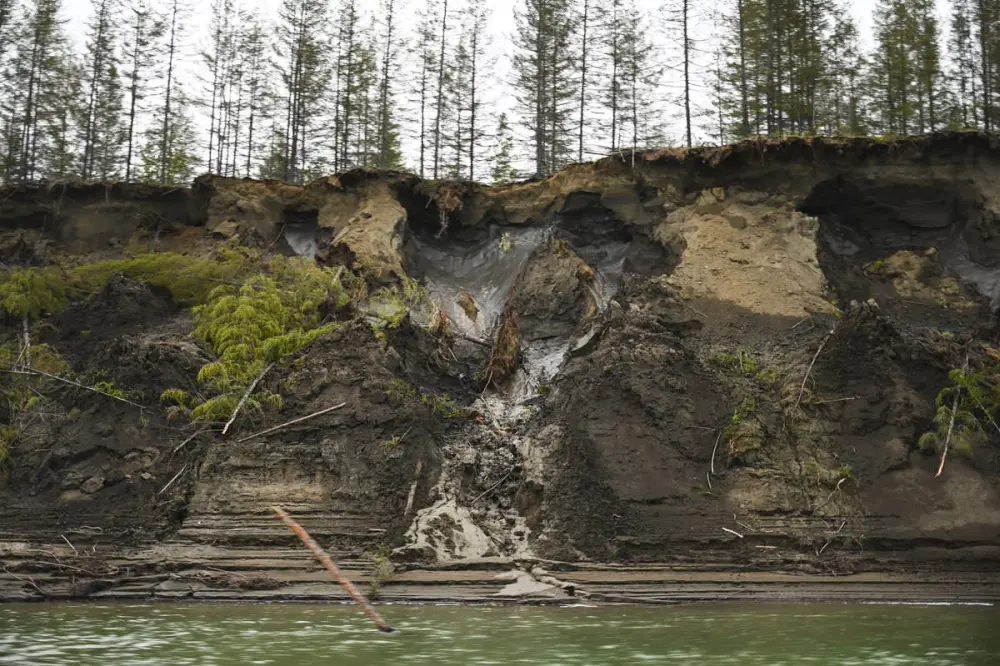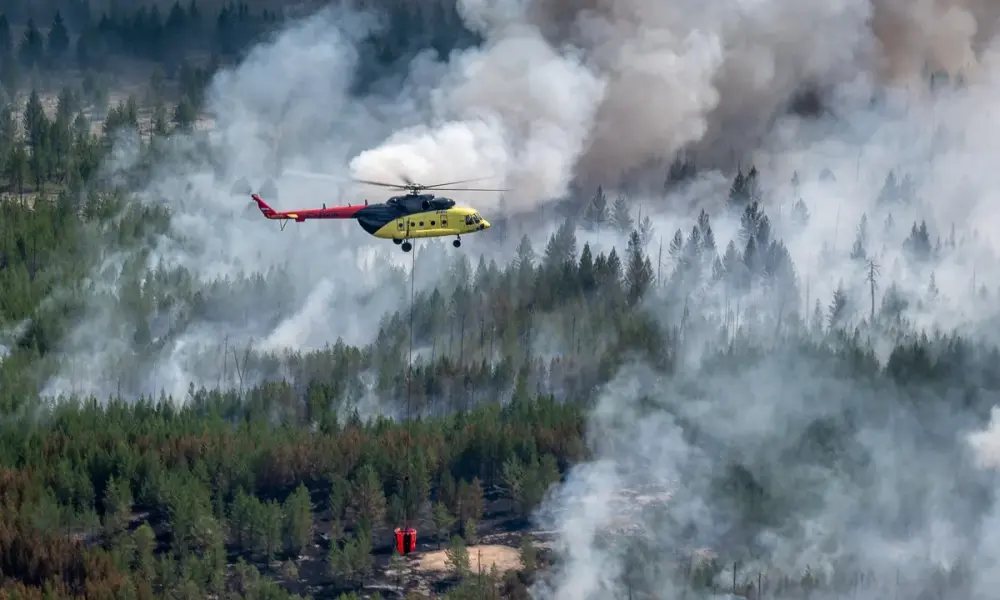Siberian Heatwave Triggers Thawing of Rock Formations in Arctic Permafrost, Releasing Staggering Amounts of Methane
Scientists have long feared the release of a potentially catastrophic amount of methane from thawing wetlands in Siberia’s permafrost. However, a recent study has discovered that the recent heatwave in Siberia has contributed to a surge in methane release “potentially in much higher amounts” from thawing rock formations in the Arctic permafrost.
This is the first study that has analyzed gas leaks from carbonated rock formations. Earlier researches of methane release have been from permafrost soil or under shallow seas.
Satellite data indicated that fossil methane escaped from limestone formations or carbonate rock formations – known to be large hydrocarbon reservoirs – after the heatwave, which spiked the temperatures about 6 degrees Celsius above normal.
Published in the journal Proceedings of the National Academy of Sciences, the study used satellite data to examine the Taymyr Peninsula and its surrounding region in northern Siberia, which experienced the world’s worst heatwave in 2020.

Permafrost melts into the Kolyma River outside of Zyryanka, Russia | Image: Michael Robinson Chavez/The Washington Post
Although, most scientists predict that the risk of a “methane bomb” – a rapid eruption of huge volumes of methane causing calamitous global warming – is minimal in the approaching years. However, the current trends of climate crisis strongly indicate that large methane releases are possible in the long term amid exacerbating climate change and temperature rises.
Methane is 84 times more powerful in trapping heat than carbon dioxide and has caused about 30 percent of global heating in the past 20 years. Apparently, its concentration in the atmosphere has risen to two and a half times from pre-industrial levels and is still rising. Most of this emission has come from fossil fuel exploitation, cattle, rice paddies and waste landfills.
According to Prof. Nikolaus Froitzheim, at Rhenish Friedrich Wilhelm University of Bonn, Germany, and the lead author of the study,
We observed a significant increase in methane concentration starting last summer. This remained over the winter, so there must have been a steady flow of methane from the ground. At the moment, these anomalies are not of a very big magnitude, but it shows there is something going on that was not observed before and the carbon stock [of fossil gas] is large. This methane would be the difference between catastrophe and apocalypse.
Another member of the research team, Prof. Gavin Schmidt, at Columbia University in the US, said that these findings do not indicate any significant threat from these emissions.

Wildfires in western Siberia has further exacerbated warming in the region | Image: Denis Bushkovsky/Tass
The limestone formations in the area, which are several hundred kilometers long and already exploited by gas drilling at the western end of the basin, are probably the major source of these methane emissions.
The study also concluded that permafrost thaw releases much higher amounts of methane, consequently making it much more dangerous than the microbial methane release from frozen soils.
The only solution to this crisis is urgent and immediate climate action, in which all of humankind must unite together and work toward ensuring the survival of life on the planet.
Via: The Guardian


